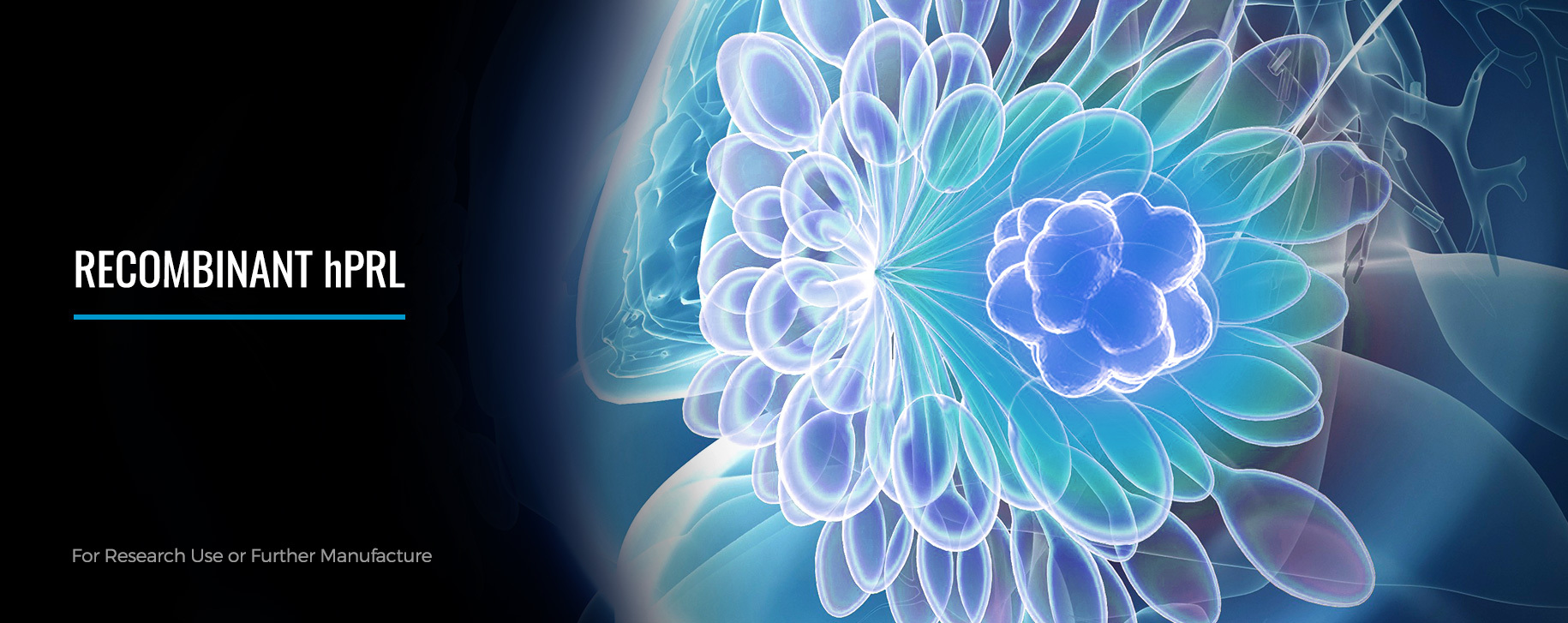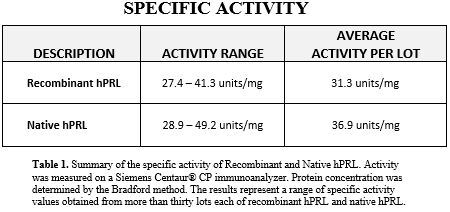Recombinant hPRL

Recombinant Human Prolactin (hPRL) from E. coli is offered as high-quality replacement for native hPRL. Starting materials for native proteins continue to be in short supply, so Scripps Laboratories is producing renewable, recombinant alternatives to address this global concern. Use the links below to view data which demonstrate that Recombinant hPRL possesses the characteristics required to make it a suitable replacement for the native form.
RECOMBINANT hPRL DATA
View data as a PDF: Recombinant hPRL data
View product: Recombinant hPRL, ≥95%
Recombinant Human Prolactin (hPRL) from Scripps Laboratories has been available for decades to support your research and diagnostic assay development. A global shortage in the supply of human pituitary glands severely impacted the availability of this critical raw material for industrial-scale manufacturing of native pituitary hormones. Scripps Laboratories’ recombinant hPRL is a reliable and economical alternative to native hPRL The data presented her demonstrate its suitability for research, assay development, and large-scale assay manufacturing purposes.
SDS-PAGE
Figure 1 presents SDS-PAGE images of highly purified recombinant hPRL, Mat. No. P1516-90002. It displays an approximate molecular weight of 23 kDa, which is consistent with the reported value for native hPRL.1 The purified recombinant protein shows no visible contaminants, under reduced/heated conditions (lanes 3,4) and the presence of a faint, higher molecular weight band under non-reduced/not heated conditions (lanes 6,7).

HPLC
Analyzed by HPLC, the elution profile of recombinant hPRL in Figure 2 displays a major peak with an elution time of 21.531 minutes and a minor peak at 20.033 minutes. Analysis of the peaks indicates the purity of this lot of recombinant hPRL is 98.27%.

SPECIFIC ACTIVITY
The specific activities of several lots of recombinant hPRL and native hPRL are summarized in Table 1. Activity was measured on a Siemens Centaur CP® analyzer. The protein concentration of each lot of recombinant and native hPRL was determined by the Bradford method. It should be noted that the activity is determined by immunoassay and is a reflection of the antibody-binding characteristics of each form of hPRL. The range of activities and the average activities are similar between both recombinant and native hPRL.

The data presented here for recombinant hPRL demonstrate it to be an excellent alternative to native PRL. Produced in E. coli, recombinant PRL is available in large, bulk lots with excellent lot-to-lot consistency.
Recombinant hPRL is in stock and available now:
P1516-90002 - Recombinant hPRL, ≥95%
Footnotes
(1) Freeman, Kanyicska, Lerant, Nagy. Physiol. Reviews, 2000, 8(4): 1523-1631
